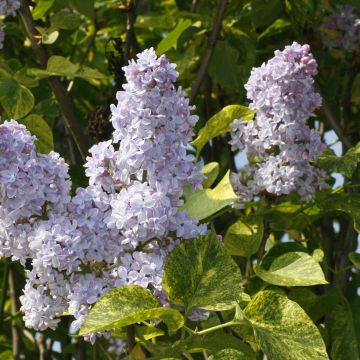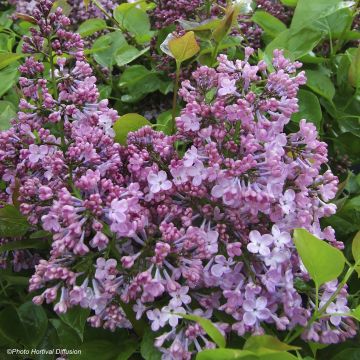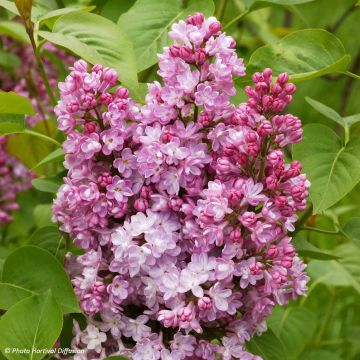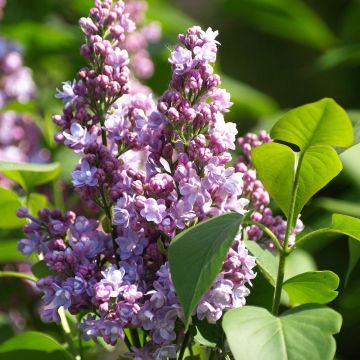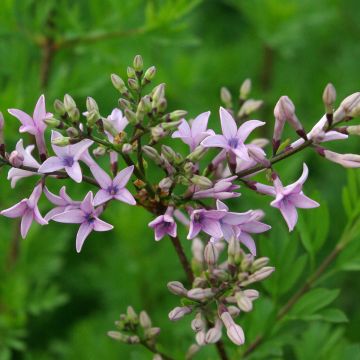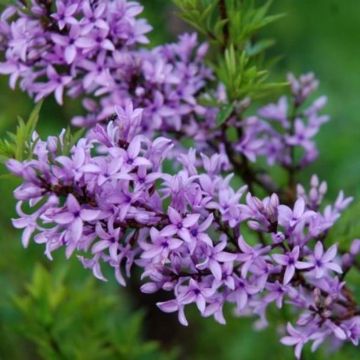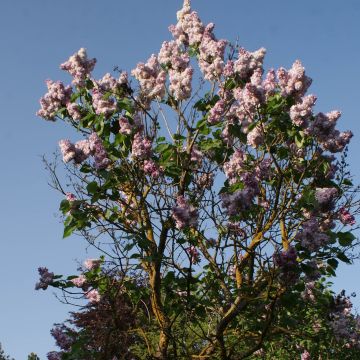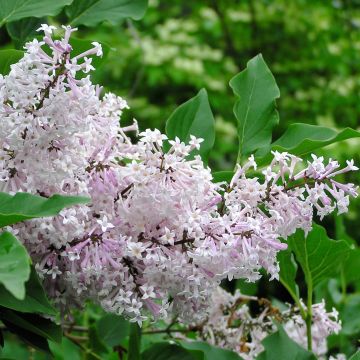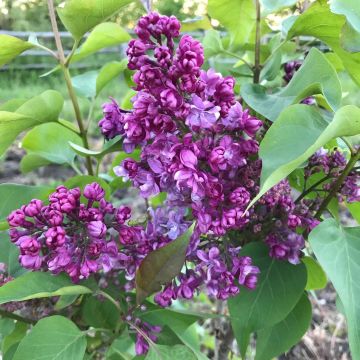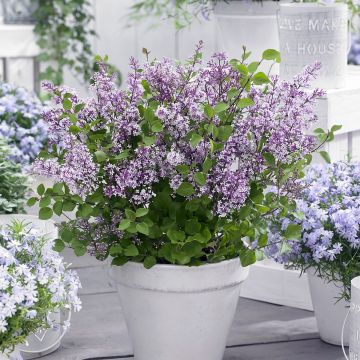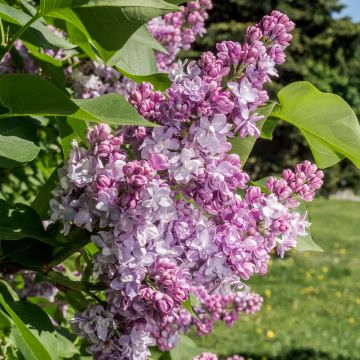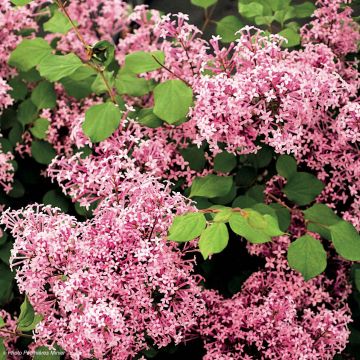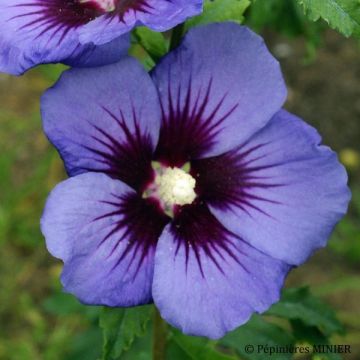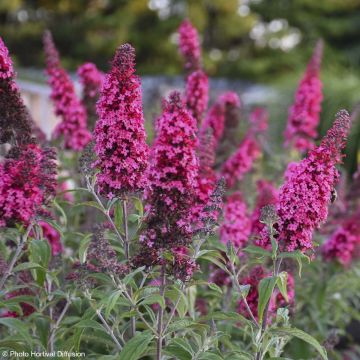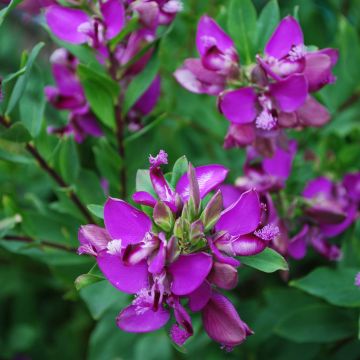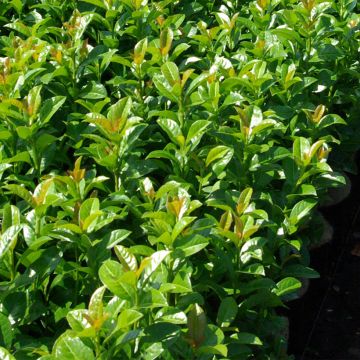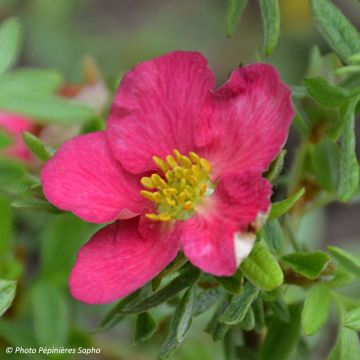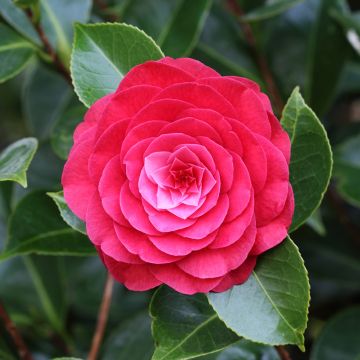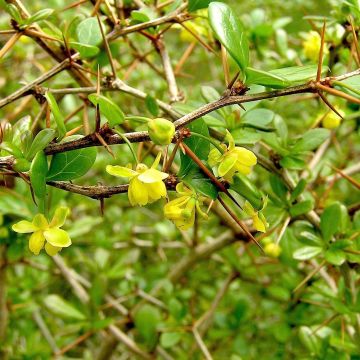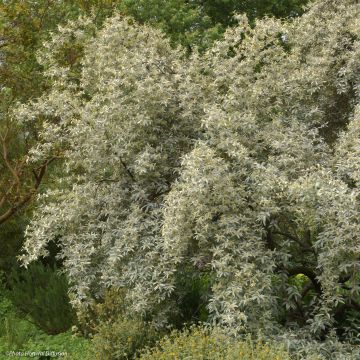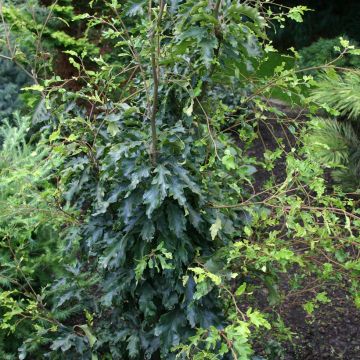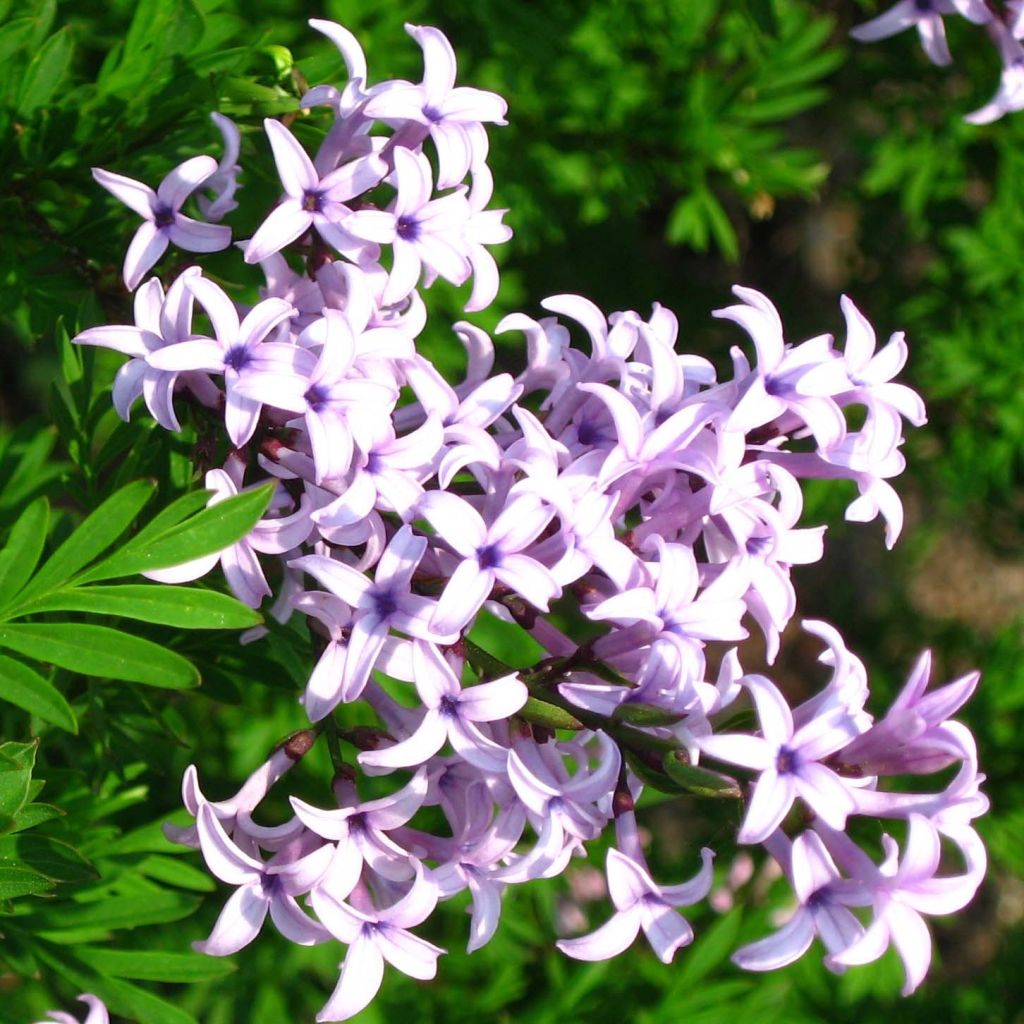

Syringa persica var. laciniata - Lilac
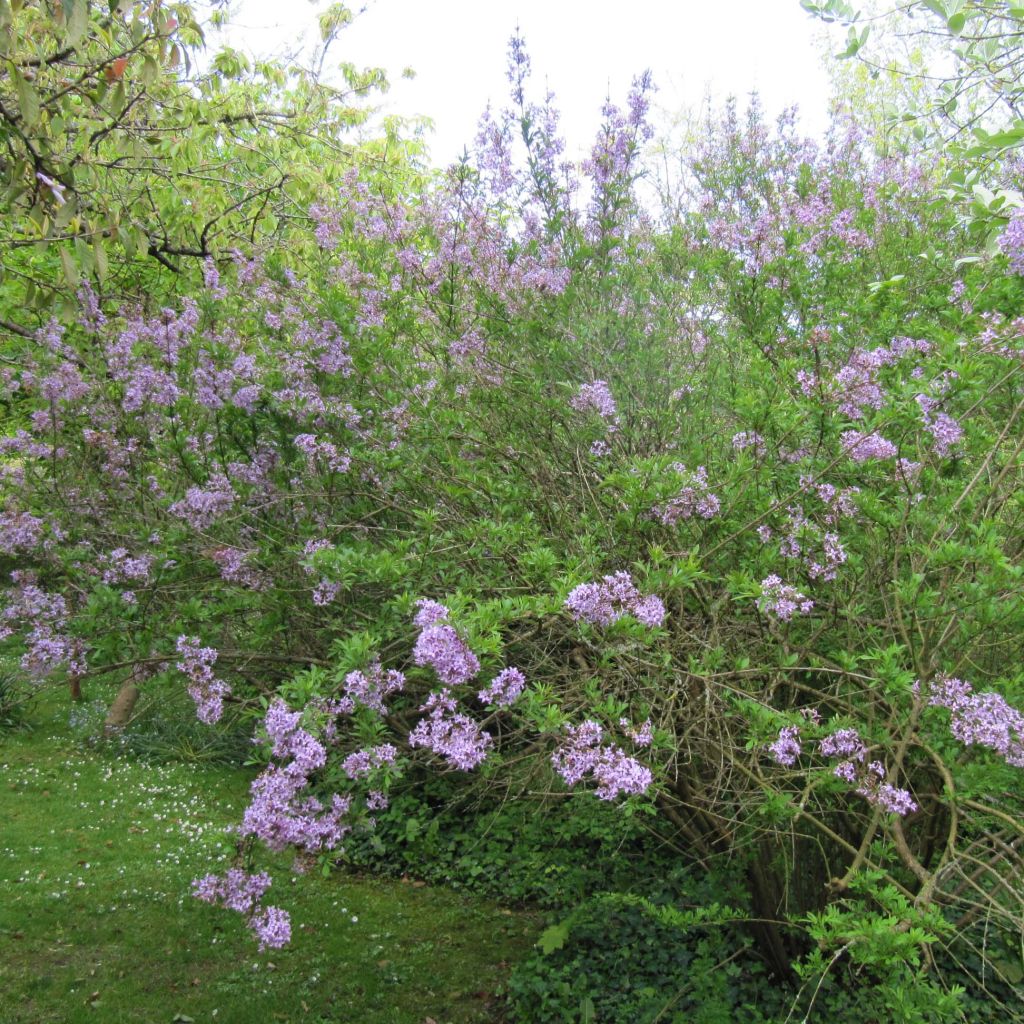

Syringa persica var. laciniata - Lilac
Syringa persica var. laciniata - Lilac
Syringa x persica var. Laciniata
Feathered Persian lilac
Lovely plants received within the specified time frame. Looking forward to seeing them bloom in Portugal: I already have it in our garden in Belgium and I love this unusual lilac.
Graziella, 16/11/2024
Why not try an alternative variety in stock?
View all →This plant carries a 24 months recovery warranty
More information
We guarantee the quality of our plants for a full growing cycle, and will replace at our expense any plant that fails to recover under normal climatic and planting conditions.
From €5.90 for pickup delivery and €6.90 for home delivery
Express home delivery from €8.90.

Does this plant fit my garden?
Set up your Plantfit profile →
Description
Syringa x persica 'Laciniata' is also known as the Parsley-leaved Lilac due to its uniquely cut foliage with narrow lobes. This characteristic, combined with its spreading, flexible, and airy habit, gives it a graceful and natural appearance, quite different from that of the common lilac. It is also distinguished by its lighter, earlier, and longer-lasting mauve-blue flowering. A charming plant with a delicate fragrance. This compact Persian lilac undoubtedly deserves to be planted more often in gardens, even when space is limited.
Syringa x persica 'Laciniata' is also known as Syringa pteridifolia, S. filicifolia, and S. persica var. pinnata. This bush is probably the result of natural cross-breeding between Syringa protolaciniata and S. laciniata. Recent studies on its genome suggest that it should be considered as a separate species. Its origins are in northwest China (Gansu) and Afghanistan. This lilac was introduced to Europe (Italy) via Turkey in the 17th century. Lilacs belong to the Oleaceae family.
This slightly suckering lilac has a bushy and rounded habit, slightly loose, and wider than it is tall. It is supported by slender and slightly trailing branches. Its growth is rather slow, reaching about 1.5m (5ft) in height and 2m (7ft) in width at maturity. Its branches bear deciduous foliage, with bright green lanceolate to elliptical leaves. They are pinnatifid, meaning they are divided into 5 to 7 long and narrow lobes with a firm texture. Flowering generally begins in late April, earlier or later depending on the climate, and sometimes continues until June. The inflorescences are lateral thyrses, pyramid-shaped, light, airy, and pleasantly fragrant, measuring 7 to 10cm (3 to 4in) in length. They consist of small, single, delicate flowers in pale violet with a blueish tint, marked with a darker violet throat. These inflorescences appear at the tips of the previous year's growth. Their fragrance is very pleasant, more complex and refined than that of our common lilac, Syringa vulgaris.
Everyone has a good reason to love lilacs, as endearing as they are unpretentious. Syringa x persica 'Laciniata' suits gardens of all sizes. It can even be planted in a large container on a terrace or balcony. Perfectly hardy, undemanding, and easy to grow in ordinary but well-drained soil, in cold or dry regions, it adapts to all climates. It is perfect for creating a scented garden, with its flowering preceding that of common lilacs, which may overshadow its more delicate blooms. It can also be planted in large borders, in groups, as a standalone specimen, or as a small informal hedge mixed with other species (Mock Oranges, flowering apple trees, coronillas, Chinese almond trees, forsythias, Japanese quinces, Exochorda, Deutzias). Its deliciously fragrant clusters are beautiful in spring bouquets, alongside early garden irises, early peonies, tulips, bellflowers, and florists' ranunculus.
Report an error about the product description
Syringa persica var. laciniata - Lilac in pictures
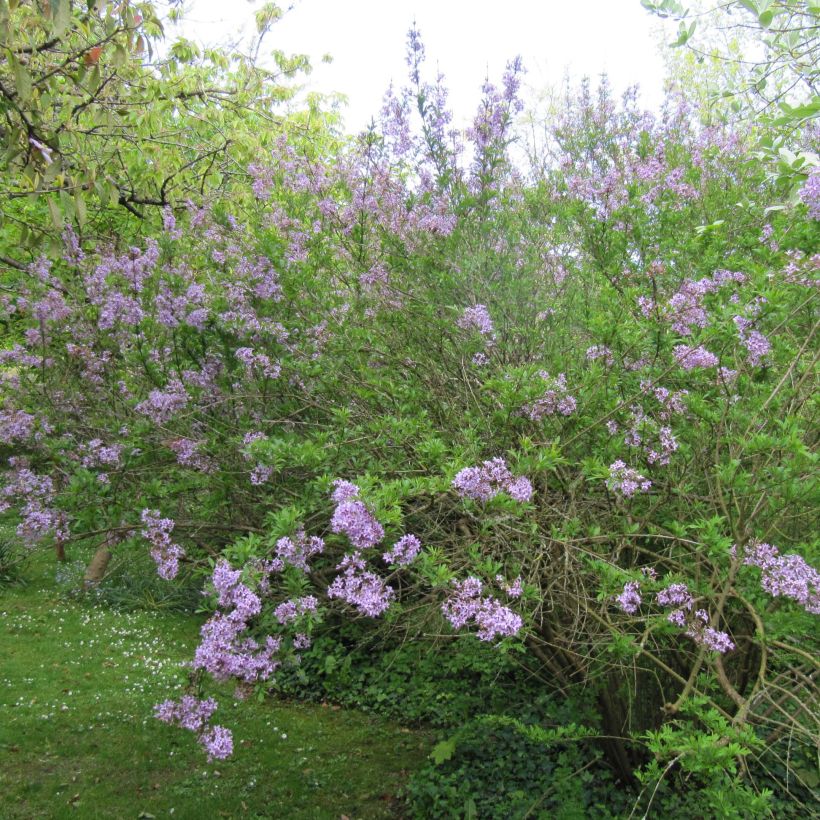

Plant habit
Flowering
Foliage
Botanical data
Syringa
x persica
var. Laciniata
Oleaceae
Feathered Persian lilac
East Asia
Other Syringa - Lilac
Planting and care
Plant from November to March and from September to June. It can adapt to any ordinary soil, but it prefers well-drained, deep, loose, fertile, even very calcareous soils. It can tolerate summer drought once established and can withstand strong winds and severe frosts in winter (up to -29°C (-20.2°F)). It is advisable to apply a complete fertiliser every year at the start of the vegetation period. Plant it in full sun or in light shade in hot climates, as its flowering is better when it receives maximum light. Remove faded inflorescences after flowering to prevent fruiting, which has no interest and depletes the plant. This will promote a late summer regrowth and a more abundant flowering the following year. This variety blooms on the previous year's shoots. Pruning is not necessary for this naturally compact variety. Avoid severe pruning that limits spring flowering in any case.
Planting period
Intended location
Care
-
, onOrder confirmed
Reply from on Promesse de fleurs
Hedge shrubs
Haven't found what you were looking for?
Hardiness is the lowest winter temperature a plant can endure without suffering serious damage or even dying. However, hardiness is affected by location (a sheltered area, such as a patio), protection (winter cover) and soil type (hardiness is improved by well-drained soil).

Photo Sharing Terms & Conditions
In order to encourage gardeners to interact and share their experiences, Promesse de fleurs offers various media enabling content to be uploaded onto its Site - in particular via the ‘Photo sharing’ module.
The User agrees to refrain from:
- Posting any content that is illegal, prejudicial, insulting, racist, inciteful to hatred, revisionist, contrary to public decency, that infringes on privacy or on the privacy rights of third parties, in particular the publicity rights of persons and goods, intellectual property rights, or the right to privacy.
- Submitting content on behalf of a third party;
- Impersonate the identity of a third party and/or publish any personal information about a third party;
In general, the User undertakes to refrain from any unethical behaviour.
All Content (in particular text, comments, files, images, photos, videos, creative works, etc.), which may be subject to property or intellectual property rights, image or other private rights, shall remain the property of the User, subject to the limited rights granted by the terms of the licence granted by Promesse de fleurs as stated below. Users are at liberty to publish or not to publish such Content on the Site, notably via the ‘Photo Sharing’ facility, and accept that this Content shall be made public and freely accessible, notably on the Internet.
Users further acknowledge, undertake to have ,and guarantee that they hold all necessary rights and permissions to publish such material on the Site, in particular with regard to the legislation in force pertaining to any privacy, property, intellectual property, image, or contractual rights, or rights of any other nature. By publishing such Content on the Site, Users acknowledge accepting full liability as publishers of the Content within the meaning of the law, and grant Promesse de fleurs, free of charge, an inclusive, worldwide licence for the said Content for the entire duration of its publication, including all reproduction, representation, up/downloading, displaying, performing, transmission, and storage rights.
Users also grant permission for their name to be linked to the Content and accept that this link may not always be made available.
By engaging in posting material, Users consent to their Content becoming automatically accessible on the Internet, in particular on other sites and/or blogs and/or web pages of the Promesse de fleurs site, including in particular social pages and the Promesse de fleurs catalogue.
Users may secure the removal of entrusted content free of charge by issuing a simple request via our contact form.
The flowering period indicated on our website applies to countries and regions located in USDA zone 8 (France, the United Kingdom, Ireland, the Netherlands, etc.)
It will vary according to where you live:
- In zones 9 to 10 (Italy, Spain, Greece, etc.), flowering will occur about 2 to 4 weeks earlier.
- In zones 6 to 7 (Germany, Poland, Slovenia, and lower mountainous regions), flowering will be delayed by 2 to 3 weeks.
- In zone 5 (Central Europe, Scandinavia), blooming will be delayed by 3 to 5 weeks.
In temperate climates, pruning of spring-flowering shrubs (forsythia, spireas, etc.) should be done just after flowering.
Pruning of summer-flowering shrubs (Indian Lilac, Perovskia, etc.) can be done in winter or spring.
In cold regions as well as with frost-sensitive plants, avoid pruning too early when severe frosts may still occur.
The planting period indicated on our website applies to countries and regions located in USDA zone 8 (France, United Kingdom, Ireland, Netherlands).
It will vary according to where you live:
- In Mediterranean zones (Marseille, Madrid, Milan, etc.), autumn and winter are the best planting periods.
- In continental zones (Strasbourg, Munich, Vienna, etc.), delay planting by 2 to 3 weeks in spring and bring it forward by 2 to 4 weeks in autumn.
- In mountainous regions (the Alps, Pyrenees, Carpathians, etc.), it is best to plant in late spring (May-June) or late summer (August-September).
The harvesting period indicated on our website applies to countries and regions in USDA zone 8 (France, England, Ireland, the Netherlands).
In colder areas (Scandinavia, Poland, Austria...) fruit and vegetable harvests are likely to be delayed by 3-4 weeks.
In warmer areas (Italy, Spain, Greece, etc.), harvesting will probably take place earlier, depending on weather conditions.
The sowing periods indicated on our website apply to countries and regions within USDA Zone 8 (France, UK, Ireland, Netherlands).
In colder areas (Scandinavia, Poland, Austria...), delay any outdoor sowing by 3-4 weeks, or sow under glass.
In warmer climes (Italy, Spain, Greece, etc.), bring outdoor sowing forward by a few weeks.

































